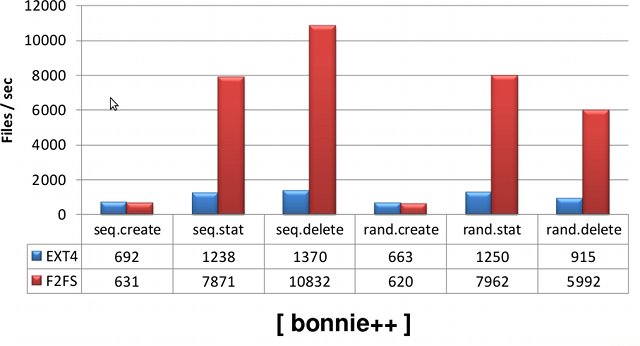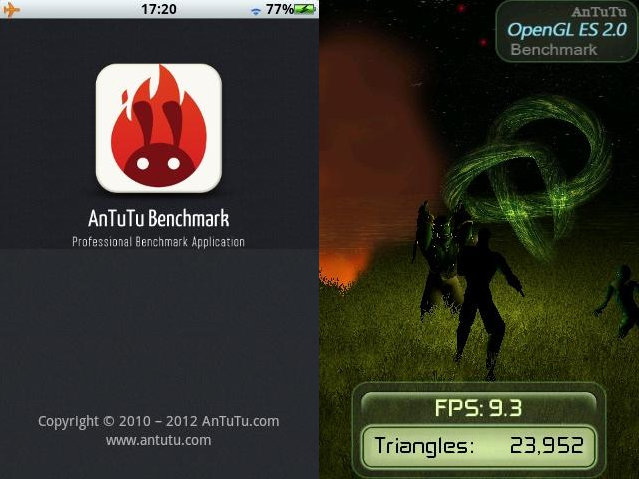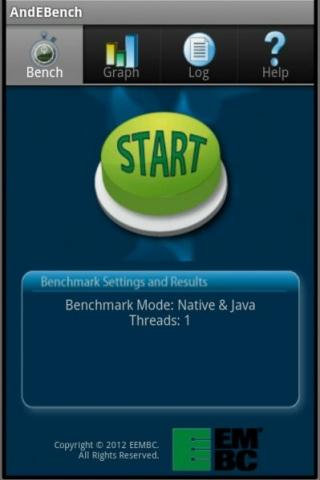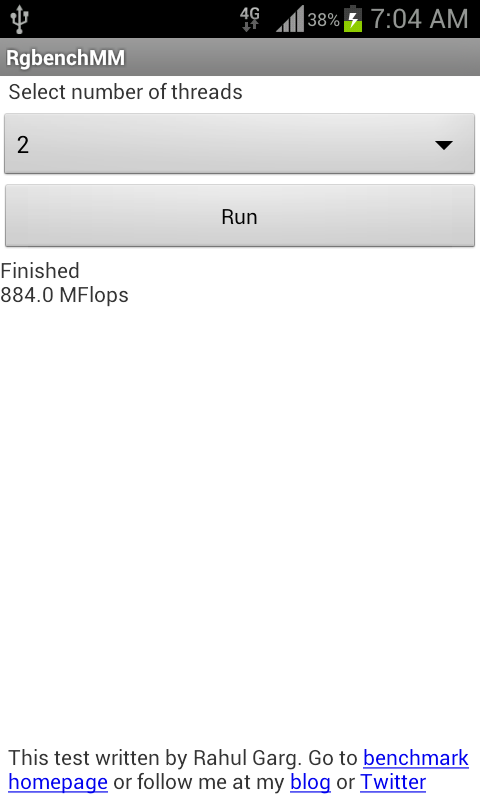Joo-Young Hwang, principal engineer at Samsung, presents F2FS (Flash-Friendly File System), a new file system designed for storage in mobile devices at the Embedded Linux Conference in Barcelona, Spain, on November 5, 2012. Abstract: Recent mobile devices adopt various flash storages as a primary storage. File system support for those flash storages is a must for flash device performance and lifespan. I will present a new file system, called F2FS, designed for mobile flash storages. F2FS is designed considering the characteristics of the underlying flash storage which has flash translation layer (FTL). F2FS outperforms EXT4, which is a popular file system for Android phones, in most of benchmarks. I will describe motivation, design, and implementation of the file system, then show performance comparison data with EXT4. Target audiences are those who are interested in file system support for flash storages such as eMMC and SSD. Kernel and file system expertise […]
MediaTek Unveils Quad-Core Cortex-A7 MT6589 SoC
This December is a busy month for silicon manufacturers and Cortex A7 processor, after AllWinner A20 and A31, Rockchip RK3188 (4x Cortex A9), Qualcomm MSM8226 & MSM8626, Broadcom BCM21664T (2x Cortex A9), MediaTek announced MT6589, a quad-core Cortex A7 System on a Chip (SoC) with Imagination Technologies PowerVR Series5XT GPU that targets mid to high-end Android smartphones and tablets. Mediatek MT6589 also integrates a multi-mode UMTS Rel. 8/HSPA+/TD-SCDMA modem developed in-house, Mediatek’s 4-in-1 connectivity combo (802.11n Wi-Fi, BT4.0, GPS and FM), and a multimedia subsystem that supports 1080p 30fps/30fps low-power video playback and recording, a 13MP Camera with Integrated ISP, up to FHD (1920×1080) LCD displays, and enhanced picture processing for DTV-grade image quality. This SoC also features MediaTek’s “Cool 3D” suite for support for stereo 3D cameras and displays & real-time 2D-to-3D, as well as support for Miracast technology. The first devices based on MediaTek MT6589 should be available […]
ZOPO ZP900S Leader Smartphone Unboxing and Review
I’ve just received ZOPO ZP900S smartphone from Pandawill by Fedex. This phablet features a 5.3″ display, MediaTek MTK6577 dual core cortex A9 processor with 512 MB RAM, 4GB flash and runs Android 4.0 (upgradable to Android 4.1 once the firmware is released). This is the lite version of ZOPO ZP900 which comes with 1GB RAM. Both devices look like low cost versions of the Samsung Galaxy Note as you can see from the comparison table below between ZOPO ZP900S, ZOPO ZP900 and Samsung Galaxy Note N7000. ZOPO ZP900S & ZP900 Specifications ZOPO ZP900S Leader ZOPO ZP900 Leader Samsung Galaxy Note CPU Mediatek MTK6577 @ 1GHz Samsung Exynos 4210 @ 1.4 GHz GPU POWERVR SGX531T ARM Mali-400MP RAM 512 MB 1GB 1GB Storage 4 GB Flash + microSD 16GB/32GB Flash + microSD Display 5.3″ IPS 960×540 (qHD) 5.3″ super AMOLED 1280×800 Camera 8MP Rear, 2MP Front 8MP Rear, 2MP Front Wi-Fi […]
2D/3D Graphics Linux Demo (X11, EGL, GLES2, Qt4) on AllWinner A10 Tablet
Xlab (Maxim Kouprianov) has tested 2D & 3D capabilities of AllWinner A10 SoC (with Mali-400 GPU) on a Ployer MOMO11 Bird Edition tablet running OpenEmbedded with kernel 3.0.52+ testing X11, EGL, OpenGL ES2 and Qt4 on the platform, and the results are pretty smooth as you can see in the video below, although there appears to be some flickering in LunaSysMgr demo. The tools used in the demos are xfwm4 (Xfce Windows Manager), es2gears_x11, cube (Qt), LunaSysMgr (Qt/WebOS) and glmark2-es2. Qt4 acceleration is done via XlibGL platform which in turns uses X11-EGL. He used the Mali drivers version r3p0 (mali400-gles20-gles11-linux-x11-ump) and xf86-video-mali on sunxi-linux github repository mainly maintained by rz2k. You can get more details on how to build Mali-400 support for AllWinner A10 on http://linux-sunxi.org/Mali400, and GPU benchmark results for A10 show the drivers seem to work as expected. Jean-Luc Aufranc (CNXSoft)Jean-Luc started CNX Software in 2010 as a part-time […]
Antutu Benchmark 3.0 Release
As I mentioned in the list of Android benchmarks, Antutu was going to release version 3.0 of the benchmarking tool on the 26th of November. This is now done, and if you go over Google Play, you can download Antutu Benchmark 3.0. They have improved a couple of things over 2.xx version mainly on the graphics side: New OpenGL ES 2.0 3D benchmark for 3D game performance test. Fully new 2D benchmark for 2D game performance test. Add compare page to compare scores with hot devices. Auto stop the benchmark if detected the app has been modified. Redesigned and adjustment app UI. Enhance SDCard path detection. Fixed some web page auto pop up bug. Fixed sometimes get stuck in splash screen. Fixed submit score page appear twice after benchmark. Update Italian and Ukraine translate. I have tried the new version on my WM8850-MID Tablet, and the first thing I’ve noticed […]
List of Android Benchmarks, Optimizations Results & Benchmarks Analysis
Linaro Connect Europe occurred in Copenhagen on Oct. 29 – Nov. 2 2012 (LCE12) and included 3 mini-summits about Android, big.LITTLE and ARMv8. Linaro has recently posted the presentation slides and I’ll have a look at a few of those slides in details and try to post information that I feel can be interesting. Today. I’ll go over the “Benchmarking and Optimization Opportunities” slides, where we can learn which Android Benchmarks Linaro use, how they’ve decreased benchmark results variance, which parts of the system are actually tested by benchmarks (profiling), and what they plan to do to further optimize Android on ARM. When I do some reviews, I usually simply use Antutu and Quadrant benchmarks to assess the performance of the devices, but Linaro uses many more benchmarks which I’ll list below. I’ll provide 2 links for each benchmark. The first link is to the official website and the other […]
FPU and Memory Android Benchmarks: RgbenchMM & RgBandwidth
There are already a fair amount of Android benchmarks such as Antutu or Quadrant, but how those benchmarks work exactly is unclear and the number they return have no direct meaning, until you start comparing results to other device results. This is why Rahul Garg, a PhD student at McGill University, has written 2 new benchmarks to test FPU and memory bandwidth with known benchmark procedures and results in MFlops and MB/s which are both available on Google Play Store: RgbenchMM– A benchmark to test the floating point performance performing double-precision matrix multiplication and fully multi-threaded to support multiple cores. It’s programmed in C++ using Android NDK, and works with ARM and x86 devices running Android 2.3.3 and greater. RgBandwidth– Asimple memory bandwidth test which tests memory copy performance (in “Simple” mode), and uses tests derived from the STREAM benchmark (“Misc” tests). This can be used to get an estimate […]
Linaro 12.09 Release with Kernel 3.6 and Android 4.1.1
Linaro release 12.09 has just been announced, and includes Linux Kernel 3.6-rc6 and Android Jelly Bean. This release provides further improvement to Android Jelly Bean, Android benchmark characterization, an ARMv8 OpenEmbedded image, UEFI bootloader support for Vexpress, origen and pandabords, and some improvement to big.LITTLE and power management. Here are the highlights of the release: Android All Linaro patches are now available on Jelly Bean. Accelerated graphics is now available on Snowball Jelly Bean build. AndEBench, AndEBench Java, Linpack, CaffeineMark, Antutu 2D and 3D, NBench, Quadrant, I/O Benchmark, Vellamo benchmark hotspot characterization available. An Origen tracking build is available and will be released this cycle as a Linaro Evaluation Build (LEB). Audio works on Origen running Jelly Bean (WAV file only). A Monkeyrunner script to run Streamline has been completed. First rev of the NI PXIe-4154 based power measurement system is created. See http://www.youtube.com/watch?v=9bKyuxLl4iw&feature=plcp In-tree AOSP tests have been automated. […]








